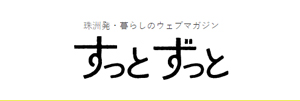本文
Suzu Ware Museum Overview
Suzu Ware Museum
Suzu ware is an unglazed pottery from the tip of the Noto Peninsula, with a distinctive dark gray color derived from its firing method. Pottery was produced in Suzu from the mid-twelfth to late fifteenth centuries before it all but disappeared.
Ancient techniques and influences
Suzu ware vessels are made using coils of iron-rich local clay, beaten and smoothed into the desired shape. The pieces are fired at high heat (over 1,200°C), which causes wood ash to adhere to the surface of the clay, creating a subtle glaze-like sheen.
The technique is derived from Korean Sue ware, which came to Japan in the fifth century. The shapes and decorative styles of early Suzu ware were influenced by the pottery produced in Seto and Tokoname in modern-day Aichi Prefecture, which were among Japan’s largest pottery production areas in the twelfth century.
Convenient trade routes
Shipping was the most convenient way to distribute ceramics, which were both heavy and fragile. The location of the Noto Peninsula on the Sea of Japan trade route between Hokkaido and Fukui Prefecture was ideal for distribution, and by the mid-fourteenth century, Suzu ware was traded over a quarter of Japan.
A sudden decline
In the latter half of the fifteenth century, Suzu ware fell into decline, and production was discontinued. Although the exact reasons are unclear, it is possibly the result of improved productivity and distribution in other production centers such as Echizen (Fukui Prefecture), Tokoname (Aichi Prefecture), and Bizen (Okayama Prefecture).
The rediscovery of Suzu ware
Suzu’s distinctive pottery was largely forgotten until an urn was excavated in 1951. Further excavations uncovered 40 kilns around Suzu. In 1972, potter Onodera Gen (1934–2016) started experimenting with Suzu clay to revive the traditional methods of making Suzu ware. Currently, there are some 40 potters making Suzu ware on the Noto Peninsula.
The museum collection includes examples of Suzu ware from the twelfth to fifteenth centuries, along with contemporary works.
The Early Development of Suzu Ware
(Exhibition Room 1 First Floor)
Suzu ware was produced from the mid-twelfth to late fifteenth centuries when Suzu was part of Wakayamaso, the largest landholding on the Noto Peninsula. It is thought that the landowners played a role in establishing Suzu as a pottery production area as a means of bolstering their income.
The iron-rich clay in Suzu was ideal for making Sue ware, unglazed ceramics that first came to Japan from the Korean Peninsula in the fifth century. Vessels were formed from coils of clay, then beaten with a large paddle to shape and smooth the clay before firing at high heat (over 1,200°C). The resulting pieces were strong, with a natural dark glaze—the result of iron oxides being drawn to the surface of the clay and interacting with wood ash during firing.
The potters of Suzu specialized in cookware and large vessels for storing soy sauce and miso, preserving food, and brewing sake. Demand for such vessels, called kame, grew significantly as agricultural production increased along the Sea of Japan coast in the twelfth century. Suzu ware could be transported easily along the coastal shipping route between Fukui and Hokkaido.
The shapes and decorative details seen in Suzu ware were influenced by the dominant pottery areas of the time, particularly Seto and Tokoname in modern-day Aichi Prefecture. Decorative techniques included incising delicate botanical designs, combing parallel lines, or stamping patterns into the clay. Shapes followed the designs of the Seto kilns, but there are examples of unique features developed in Suzu, such as fluted rims.
Product Innovation and Coastal Trade
(Exhibition Room 2 Second Floor)
The potters of Suzu specialized in making urns, storage jars, and mortars for food preparation, diversifying also into religious items and Buddhist statuary for the rising samurai class. During the Kamakura period (1185–1333), power shifted from the emperor and nobility to powerful warlords and samurai under shogunal rule. Buddhism, which had largely been the province of the imperial court, grew in popularity among samurai and the general populace. As Buddhism spread to rural areas, samurai and wealthy farmers began to build tombs and choose Buddhist cremations. Suzu potters made burial jars and urns for ashes, along with religious statuary.
While Buddhist sculptures were commonly carved from wood or stone, the potters of Suzu started to mass-produce Buddhist statues in the late twelfth to thirteenth centuries by pressing clay into wooden molds. It is believed that these statues would have been enshrined in village prayer halls in areas where a temple might be difficult to visit regularly.
The Noto Peninsula was on the shipping route between Hokkaido and Fukui along the Sea of Japan. Shipping was the most convenient way to distribute ceramics, which were both heavy and fragile. Many of the extant examples of Suzu ware were unearthed from sites in Suzu or recovered from shipwrecks.
By the fourteenth century, Suzu ware was distributed across a quarter of the Japanese archipelago. In the latter half of the fifteenth century, Suzu ware fell into decline, and production was discontinued. Although the exact reasons are unclear, it is possibly the result of improved productivity and distribution in other production centers such as Echizen (Fukui Prefecture), Tokoname (Aichi Prefecture), and Bizen (Okayama Prefecture), forcing Suzu ware out of the market.
A Lost Art Rediscovered
(Exhibition Room 3 Second Floor)
Suzu’s distinctive pottery was largely forgotten until an urn was excavated in 1951. Further excavations uncovered 40 kilns around Suzu. Early Suzu ware was fired in tunnel-shaped anagama kilns (sometimes called tunnel kilns) built into hill slopes. These large kilns had a chamber around 9 meters long, with a small door at the front for loading the pottery and stoking the fire, and a flue and chimney at the back. There is a full-sized reconstruction of a thirteenth-century anagama kiln on the grounds of the museum.
Temperatures could reach over 1,200°C, and the kilns required continuous stoking with firewood to keep the temperature up. A firing could take from 48 hours to a week. At the end of a firing, the fire was extinguished, and the furnace opening, and flue were sealed. Starving the kiln of oxygen in this way caused the wood ash and soot to interact with the minerals in the clay, producing a grayish-black hue and a natural glaze.
In 1972, potter Onodera Gen (1934–2016) started experimenting with Suzu clay to revive the traditional methods of making Suzu ware. Currently, there are around 40 potters making Suzu ware on the Noto Peninsula. Some of these contemporary works are on display at the museum, and a video presentation outlines the processes of making Suzu ware.











 珠洲市役所
珠洲市役所






